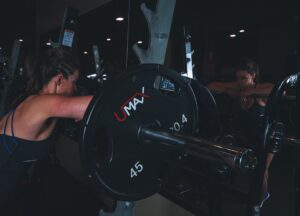There’s A Subtle Difference Between “Working Out” And “Training” – And That Difference Matters For Your Results
As a personal trainer, I get a lot of questions from friends, family, and clients about what to eat to lose weight or which exercises are best for toning up certain muscles. People want to know the insider secrets to get lean, strong, and awesome.
 The real answer to getting results in the gym is you have to make a plan and take consistent action toward your goals until you see results. Boring answer, right?
The real answer to getting results in the gym is you have to make a plan and take consistent action toward your goals until you see results. Boring answer, right?
Here’s where it gets interesting: the “secret” is that you need to have a good plan. Just walking into a gym five times a week and sweating for 30-45 minutes won’t get you anywhere. Running around the block every day won’t do it, either.
Not to say those are bad ideas, especially if you’re just starting your fitness journey. It’s important to build a base level of cardiac fitness before undertaking a more intense training plan. But getting your sweat on isn’t training – it’s working out.
If those things sound the same to you, you’re not alone.

Most people would use the words “training” and “working out” interchangeably.
Nothing wrong with that in general conversation. But as fitness concepts, the two are vastly different.
“Working out” can mean any activity under the sun that gets you moving and maybe works up a good sweat. It can be a walk or jog in the park, hiking, biking, playing sports, or going to a group fitness class and jumping around on BOSU’s for an hour.
All of these things are good “workouts.” They get your heart rate up, get you moving and sweating, and make you feel like you did something active. But did you accomplish anything with that workout?
Training, on the other hand, involves a structured plan that progresses you from where you are to where you want to be. It revolves around the “SAID” principle, which says that your body undergoes Specific Adaptations to Imposed Demands. In other words, your body adapts to the things you do.
That’s why you need to keep adding volume – more reps, more sets, and heavier weights – to the exercises you do each week. When you train with progressive overload, your body responds by getting stronger, leaner, and better at the exercises you do. That’s where training is vastly different from working out.

How can you tell if you’re working out versus training?
- If you go to the gym without a plan, you’re just working out.
- If you have a plan, but it doesn’t create overload – that’s just “working out.”
- If you pick weights at random or use the same ones each week, you’re just working out.
Ask yourself this: do you write down your workouts? Without tracking your sets, reps, and weights, you cannot gauge whether you’re getting stronger. People who train for a goal track their workouts. And people who train get results.
Stop working out, start training!

